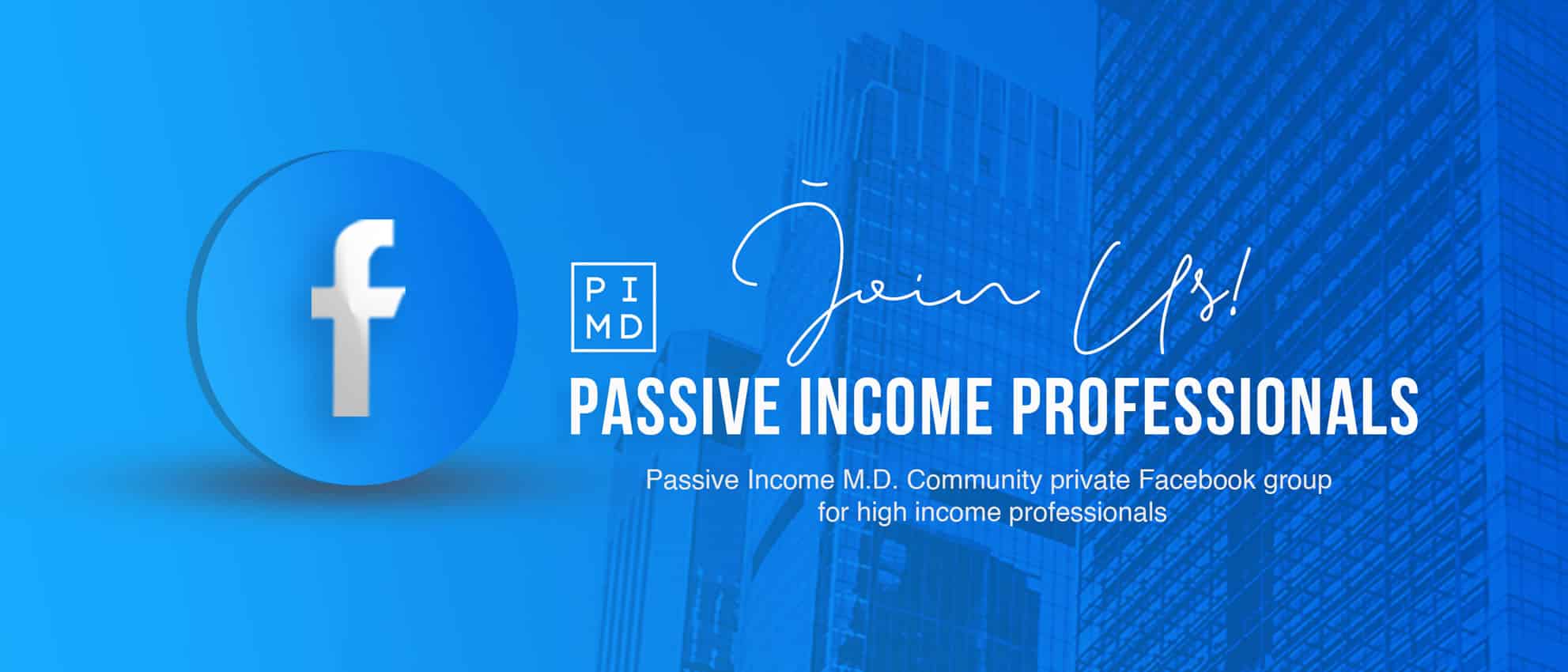
Book Report: The White Coat Investor
This post may contain links from our sponsors. We provide you with accurate, reliable information. Learn more about how we make money and select our advertising partners.
I tend to get asked quite often what books physicians should read to make sure they're on a good path financially and help them on their way to financial freedom. This is one of those books at the top of my list.
Today's Classic is republished from Physician on Fire. You can find the original post here. Enjoy!
It’s that time of year again. The time where the kids go back to school, report on how their summer was spent, meet their new teachers and classmates, and begin school work once again.
School is always in session when you’re a grownup, and, being a grownup myself, I am continually learning. In the last week of my summer vacation, I read a couple books, and I’d like to share with you my very first Physician on FIRE book report on one of my recent reads. The book I’ll be discussing today is Dr. Jim Dahle’s The White Coat Investor: A Doctor’s Guide to Personal Finance and Investing.
A few posts ago, when the good Dr. Dahle took part in a Q&A with me, I sheepishly admitted to not having read his book. I also said I would rectify the situation if an autographed copy would magically arrive on my doorstep.
That magic happened, making this post possible. Thanks, Doc!
Dr. Dahle made the comment to me that a financially independent physician probably wouldn’t get much out of a book like this, but I respectfully disagree. I’m glad to have it, to have read it, and there are a couple chapters that I will be referring back to when a refresher on some of the less straightforward topics in the personal finance realm. Yes, asset protection and estate planning, I am talking about you.

Book Report: The White Coat Investor
The book is organized into 16 chapters in 157 pages, with each chapter ending with a number of online and / or print references for further reading. The book can be purchased in paperback and Kindle form.
Although it is a relatively quick read, it is jam packed with useful, actionable information. I would guess most, but not all, of the lessons from the book, exist in some form on his website of the same name, but reading the book is a wonderful way to absorb the most important knowledge over the course of a couple evenings.
Although I took a meandering path over the last ten years and managed to find my way to financial independence, I do believe I would have gotten to this point more quickly and with more clarity if this book had existed when I was coming out of residency ten years ago.
Unfortunately, Dr. Dahle was in the same place as me at the same time, making bigger mistakes than I ever did. I credit Andrew Tobias’ The Only Investment Guide You’ll Ever Need with setting me more or less on the right track when I was in medical school.
Young and future physicians, you should be elated that Dr. Dahle’s book, written for doctors by a doctor, exists for you. Although it’s true that money is money and doesn’t matter if you earn it doctoring, lawyering, digging ditches, or slinging beers, physicians do face some unique challenges. This book defines them and shows you how to navigate your way to a successful financial future.
Highlights
Since it’s been a good 25 years since I last wrote a book report, I am not entirely sure how to proceed. As I read the book, I stickied a slew of pages and paragraphs that I thought were worth revisiting. Let’s go ahead and revisit those.
The book kicks off with high praise from the venerable Dr. William Bernstein, a neurologist who knows a thing or two about writing personal finance books, having authored a number of them himself.
A quick first chapter highlights all the reasons why it has gotten tougher in recent years to make bank as a physician. Did you know that Stafford loans are all unsubsidized now? I didn’t. When I was a student, I took all the subsidized loans I could get.
The second chapter shows us how the author’s net worth has risen to a seven-figure sum in under a decade since residency graduation. There are also inspiring and impressive examples from other physicians who have been fiscally responsible and successful.
In the next chapter, the 4% rule is explored, looking at its historical success rate with various asset allocations. A nod is given to a favorite book of mine, The Millionaire Next Door, which pointed out some twenty years ago that physicians are, on average, under-accumulators of wealth. Dr. Dahle goes into detail as to why that is, and how to buck the trend.
Chapter Four is for pre-meds and medical students, focusing on the costs of medical school and how to pay for them. Spoiler alert: He recommends going to the least expensive school that will take you unless you are dead set on becoming an academic superstar someday. Residency will matter much more, regardless.
Next, we graduate to residency. Choose wisely, consider renting rather than buying, and by all means, don’t start to spend like an attending yet. I couldn’t agree more.
Chapter Six is titled, “The Secret to Becoming a Rich Doctor.” I’d love to tell you what that is, but it’s a Secret, remember? I’ll give you a hint, though. It’s not about how much money you earn.
Chapter Seven is probably my favorite. There’s a fair amount of number crunching (I love number crunching), talk of early retirement, and a paragraph on the Rule of 72. We are also assured that Social Security isn’t going broke, despite what the doomsayers and death eaters like to say.
Chapters Eight and Nine are the “How to Invest” chapters. Dr. Dahle intentionally made these brief, hitting only the high points and not in much detail, but excellent full books on the topic were referenced. Brevity was the goal here, but I personally would have liked to have seen these beefed up a bit. I think a 200-page book with 50 pages focusing on investing would be more worthwhile than a 157-page book with 18 pages dedicated to the subject.
The subsequent chapter is excellent and deals with a topic that I haven’t personally dealt with: choosing a financial advisor. Of course, many of them are commissioned salesman, and this book tells you how to recognize them, and what designations and traits to look for in a good advisor who will have your best interests in mind. You want to be sure your incentives are aligned, and that there is no conflict of interest.
He even tells you how much you should expect and be willing to pay for good advice. Of course, there is a caveat. Once you know enough to determine if your advisor is worth his or her salt, you might actually know enough to do it yourself, like he does and I do.
The next two chapters are concise summaries of what you need to know about estate planning and asset protection. These areas are not my strong suit, but reviewing them shows that I am doing the big things right, and that a plan doesn’t have to be terribly complicated.
Chapter 13 deals with taxes, a topic in which I’m fairly well versed, although not as well as Dr. Dahle, who does his own taxes. I will quibble with the inclusion of “Pay property and state income taxes” in the “How to Lower Your Tax Bill” section. Paying those taxes may lower your federal income tax bill some (although the AMT can negate the “benefit” of paying state income tax), but they obviously add to your total tax bill. He does refer to the concept on the following page, noting that “It makes no sense to pay $1.00 for something in order to save thirty-three cents in tax.” And with that statement, we’re back on the same page.
Chapter 14 is the last nuts and bolts chapter, dealing with the pros and cons of different business types, including the advantages of being taxed as an S corporation, which is something I did for the first five years of my career as an independent contracting locum tenens anesthesiologist.
The penultimate chapter delves into a topic that I often contemplate, “Living the Good Life.” There’s only so much you can say in two pages, which is unfortunately all that was given to the subject of living well. Early Retirement rears its beautiful head once again under the subheading “Transitioning Out of Medicine.” The good Dr. Dahle states quite truthfully, “While very few doctors will ever be able to retire completely at forty, retiring at fifty is a very doable goal for a physician who went to medical school in his twenties,” confirming that people like me are a rare breed.
In closing, Chapter 16 is devoted to the Mission of the White Coat Investor, to help physicians get a “fair shake” on Wall Street. In his closing statement, he asks you, the reader, to “Pass this book along to one of your colleagues.” To which I say, “Get your own copy.” I’m keeping mine!
Conclusion
As I have stated, this book would have been a wonderful asset to have when I was a medical student, resident, or new attending. Fortunately, Dr. Dahle and I have many similar traits and ideas regarding personal finance, so I managed to do alright without this book. That being said, I would gladly gift a copy of this volume to anyone about to start or finish medical school or residency to help them get a jumpstart on their financial future.
The prolific Dr. Dahle has mentioned in a Q&A on this site and in a podcast interview with Dr. Nii Darko that he is working on some other books. That’s books, not book. I really enjoyed the podcast by the way, and learned some trivia that you won’t find in the book. For example, did you know that Dr. Dahle grew up in Alaska? Nine years ago, my wife and I took our honeymoon in that beautiful outdoor playground.
I look forward to seeing what he’s got in the works, and I’ll be more than happy to review and report on whatever the Good Doctor comes up with next.
Disclaimer: The topic presented in this article is provided as general information and for educational purposes. It is not a substitute for professional advice. Accordingly, before taking action, consult with your team of professionals.


